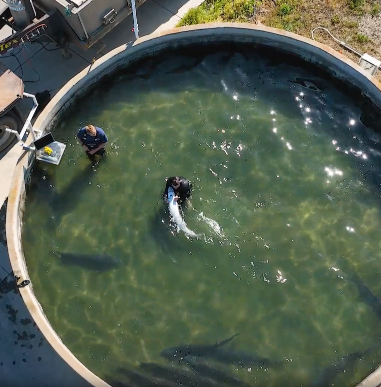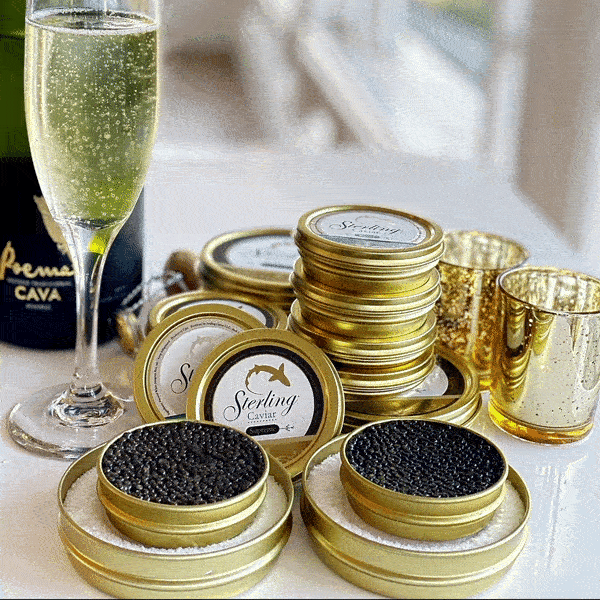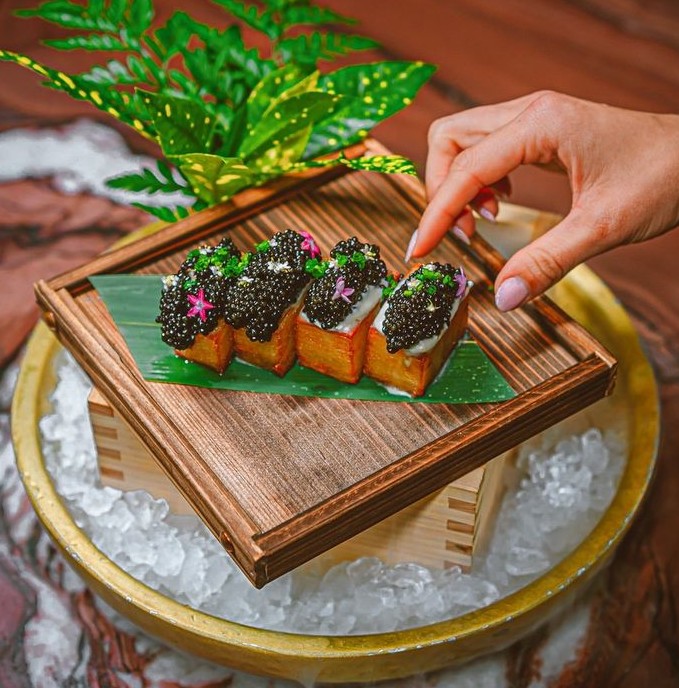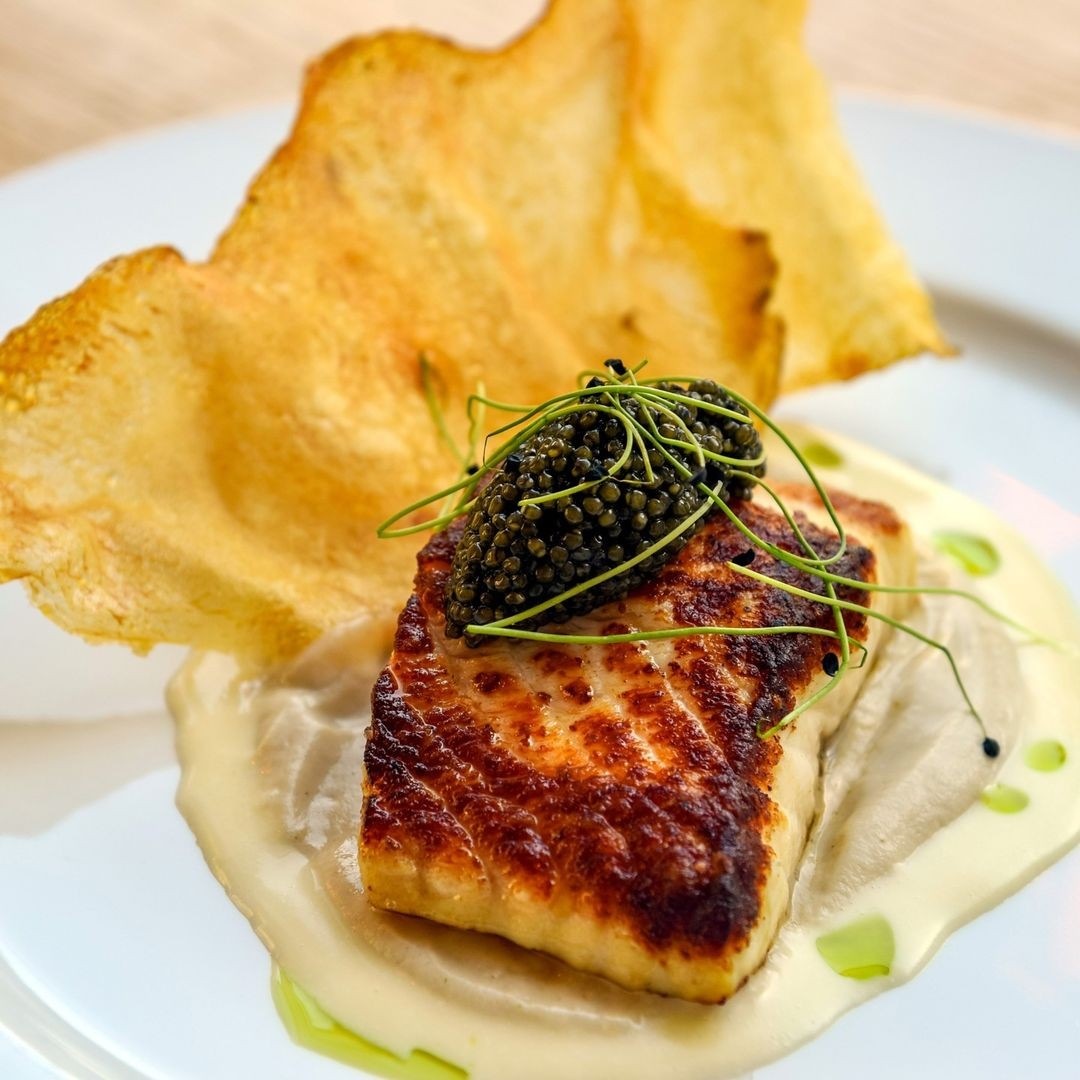Why is Caviar Eaten Raw? The Ultimate Guide to Savoring It Right

Introduction
Caviar, often referred to as fish roe, is a culinary gem that has graced the tables of the elite for centuries. Specifically, it's the eggs or roe harvested from certain species of fish, with sturgeon caviar being the most prized.
While salmon caviar, known for its vibrant color and distinct flavor, is also popular, it's the delicate caviar taste of the sturgeon's eggs that truly sets it apart. One of the unique aspects of eating caviar is that it's traditionally eaten raw.
This method of consumption accentuates its rich and nuanced flavors. When you eat caviar, especially when it's fresh caviar, you're indulging in a luxury delicacy that's best enjoyed in its purest form, eaten fresh without any adulteration.
The very act of eating caviar raw is a testament to its esteemed status in the world of gourmet foods.
History and Origin of Caviar
The allure of caviar has spanned centuries and continents. Historically, wild beluga sturgeon from the Caspian Sea provided some of the world's most sought-after sturgeon roe.
Regions like Russia and Iran became synonymous with high-quality caviar, with the delicacy being a symbol of opulence and luxury. As the demand grew, other regions also began appreciating the unique caviar tastes, leading to its global appeal.
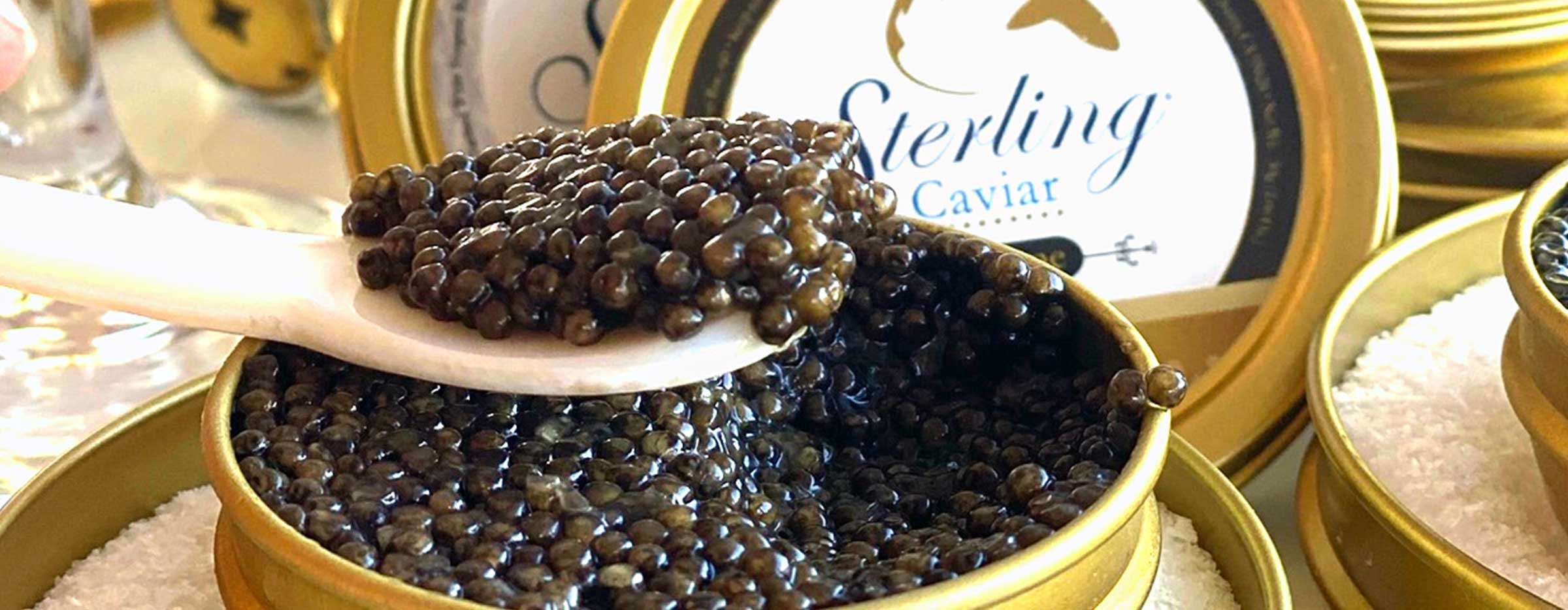
What is Caviar?
At its core, caviar is the roe or eggs from fish, primarily from the sturgeon family. True caviar, a term revered by connoisseurs, specifically refers to the roe derived from wild sturgeon species like beluga, sevruga, and ossetra. The raw fish eggs are meticulously extracted, ensuring the preservation of their delicate texture and flavor.
While beluga caviar, with its large, silvery grains, is often considered the pinnacle, other types like sevruga caviar also hold significant culinary value. Salmon roe, although not classified as true caviar, is another popular variant, known for its bright hue and distinct taste.
The key difference lies in the source: true caviar comes exclusively from sturgeon, while other fish roes, like salmon roe, are not considered genuine caviar.
Regardless of the type, raw caviar, when consumed, offers an unparalleled gastronomic experience, transporting one to the rich tapestry of its storied past.
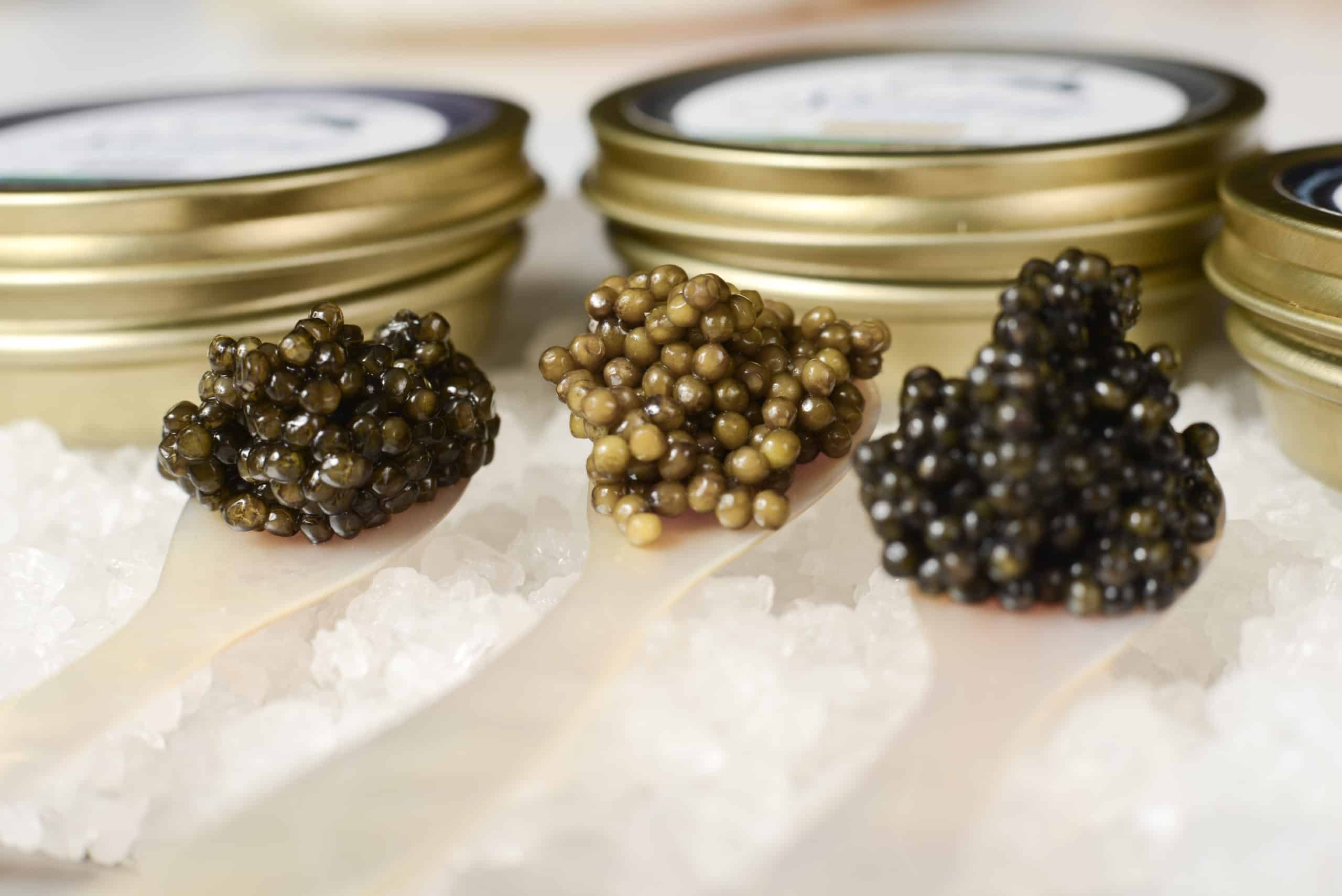
The Raw Appeal of Caviar
Preserving Delicate Flavors and Textures
Caviar's rich flavor and unique texture are best appreciated when it's consumed in its raw form. The delicate nature of these tiny eggs means that any form of cooking can drastically alter their taste and consistency.
When you serve caviar, it's essential to ensure that its inherent qualities shine through, offering a gastronomic experience that's both luxurious and authentic.
Freshwater fish, especially sturgeon, provide some of the finest caviar, and their roe's natural taste is a testament to the waters they inhabit.
Why Caviar is Never Cooked?
The idea to cook caviar might seem tempting, especially when incorporating it into various seafood dishes. However, caviar is never cooked.
Doing so would rob it of its signature taste, turning the luxurious treat into something unrecognizable. The heat can break down the fragile membranes of the eggs, leading to a mushy texture and a compromised flavor profile.
Instead, caviar is often paired with accompaniments that complement its taste without overshadowing it. Common pairings include cream cheese, boiled eggs, and blinis, which enhance the caviar experience without detracting from its essence.
Traditional Methods of Preservation
Storing and serving caviar in its best form is an art in itself. Traditional methods of preservation revolve around salting the roe shortly after it's harvested. This not only extends its shelf life but also accentuates its flavor.
When you store caviar, it's crucial to keep it at a temperature just above freezing, ensuring its freshness is maintained.
Serving caviar straight from the refrigerator is a common practice, as it ensures the roe remains firm and its flavors are at their peak. Using non-metallic utensils, like mother-of-pearl spoons, further ensures that the taste remains untainted.
In conclusion, to truly enjoy caviar, one must appreciate the nuances that come with its raw consumption. From the way you serve caviar to the accompaniments you choose, every step plays a role in delivering an experience that's as rich in history as it is in flavor.
Taste and Texture of Raw Caviar
The allure of caviar lies not just in its status as a luxury delicacy but also in its distinctive taste and texture, especially when eaten raw.
Raw caviar, with its fish roe meticulously harvested, offers an intense flavor that's both salty and briny, with subtle undertones that can be buttery or even nutty, depending on the types of caviar.
Black caviar, for instance, has a rich and robust taste, while hackleback caviar offers a slightly milder flavor profile.
Upon placing a bead of good caviar on the tongue, one can immediately sense the burst of flavor. It's a sensation that's unparalleled, a combination of the sea's freshness and the intricate processing methods that go into its preparation.
The texture is equally captivating, with the eggs providing a delicate pop, releasing their flavors in a wave of culinary delight.
Comparatively, while other foods might offer richness or complexity, few can match the multi-layered experience of caviar.
For instance, sour cream or crème fraîche, typically served alongside caviar, are creamy and tangy, providing a contrasting backdrop to the caviar's salinity. Yet, even these accompaniments, as delightful as they are, play a supporting role, allowing the caviar to remain the star of the show.
In essence, raw caviar stands out not just for its taste but also for the journey it takes one on—a journey of flavors, textures, and culinary traditions.
Perfect Pairings with Caviar
While caviar is a delicacy on its own, it's often paired with accompaniments like sour cream or red onion to elevate its flavor. However, it's crucial to remember that not all fish roes provide the same health benefits, making caviar a unique and beneficial addition to one's diet.
Health Benefits of Consuming Caviar Raw
Omega-3 Fatty Acids and Brain Health
Caviar, particularly when served raw, is a rich source of Omega-3 fatty acids. These essential fatty acids are pivotal for brain and mental health, supporting cognitive functions and mood stabilization.
Skin Radiance and Overall Well-being
Beyond its brain-boosting properties, caviar offers benefits for the skin, imparting a natural glow thanks to its nutrient-dense profile.
Each soft gelatin orb of caviar is packed with vitamins and minerals that promote skin health.
Heart Health and Cholesterol Regulation
Regular consumption of caviar can also aid in regulating blood cholesterol levels, fostering heart health and overall vitality.
Boosted Immune System
Raw caviar is rich in vitamins, especially Vitamin B12, which plays a vital role in maintaining a healthy immune system. Regular consumption can help strengthen the body's natural defenses against illnesses and infections.
Joint Health and Anti-inflammatory Properties
The Omega-3 fatty acids present in caviar also possess anti-inflammatory properties. Consuming raw caviar can help alleviate symptoms of arthritis and other inflammatory conditions, promoting joint health and mobility.
Enhanced Eye Health
Caviar contains essential nutrients like lutein and zeaxanthin, which are beneficial for eye health.
These antioxidants protect the eyes from harmful high-energy light waves like ultraviolet rays, reducing the risk of age-related macular degeneration and cataracts. Consuming raw caviar can contribute to better vision and overall eye health.

How to Enjoy Caviar at its Best
Caviar, with its rich history and luxurious appeal, deserves to be savored in the most exquisite manner. Here are some tips to ensure you enjoy this delicacy to the fullest:
Serving Tips
Always serve caviar chilled to preserve its creamy texture and nuanced flavors. A bed of crushed ice can be an elegant way to present it.
-
Use non-metallic spoons, preferably mother-of-pearl or bone, to avoid altering the taste. Metals can impart a metallic flavor that detracts from the caviar's natural essence.
Pairings with Drinks and Foods
The types of caviar you choose can influence the drinks and foods you pair with it. For instance, a robust beluga pairs beautifully with a crisp, cold vodka, while a more delicate sevruga might be better suited to a dry champagne.
For a classic experience, serve caviar atop unsalted crackers or blinis. The neutral base allows the caviar's flavors to shine.
-
Traditional accompaniments include chopped hard-boiled eggs, golden brown toast points, and finely chopped red onions. These enhance the caviar experience without overshadowing its taste.
Traditional Accompaniments
Sour cream or crème fraîche can complement the caviar's saltiness with their creamy coolness.
-
For a modern twist, try pairing caviar with sushi or sashimi, allowing the contrasting flavors to play off each other.
In essence, enjoying caviar is an art. Whether you're a first-time taster or a seasoned connoisseur, these tips will ensure you appreciate this delicacy in all its glory.
Elevate Your Caviar Experience with Sterling Accessories
To truly savor the essence of caviar, the right accessories are indispensable. At Sterling Caviar, we offer a curated collection designed to enhance your caviar indulgence.
Our Mother Of Pearl Spoon ensures that the delicate flavor of the caviar remains untainted, providing an authentic tasting experience. For those on the go or looking to gift, the Sterling Insulated Tote Bag is perfect for preserving the freshness of your caviar.
And, to seamlessly access your caviar, our Sturgeon Caviar Tin Opener is a must-have. Each accessory is crafted with precision, reflecting our commitment to quality and luxury. Dive into the world of caviar with Sterling's accessories, ensuring every bite is an experience to remember. Explore our full collection and elevate your caviar moments.
Conclusion
Caviar, a symbol of luxury and culinary excellence, truly shines when consumed in its raw form. The intricate dance of flavors, from its briny undertones to its creamy texture, is best experienced without any adulteration.
Throughout history, cultures have revered this delicacy, not just for its taste but for the traditions and craftsmanship it represents. Eating caviar raw allows one to connect with this rich tapestry, appreciating every nuance and subtlety it offers.
If you've never indulged in this gourmet treat, we wholeheartedly encourage you to dive into the world of caviar. Let your palate explore, savor, and celebrate this timeless delicacy.
And for those who already cherish it, may your appreciation only deepen with every taste. As a final note, don't miss out on exploring the finest selections the world has to offer. Check out our collection of Caviar and embark on a culinary journey like no other.
Check out our most popular content
Have you tried Sterling Caviar?
Get $50 off your first order! Use promo code: ENJOYSTERLING50 at checkout.
It's time to indulge your senses and create new memories with your loved ones!


